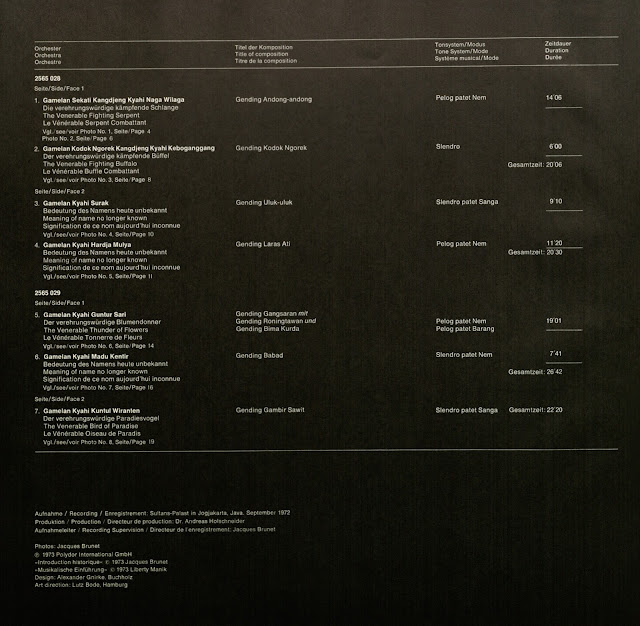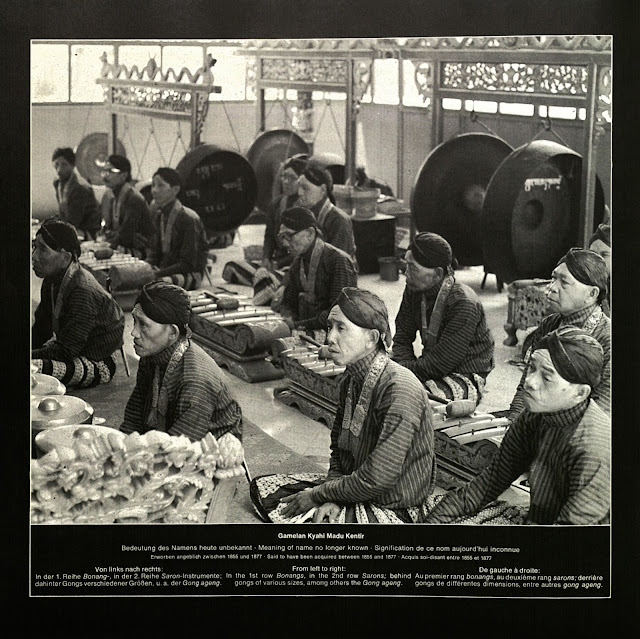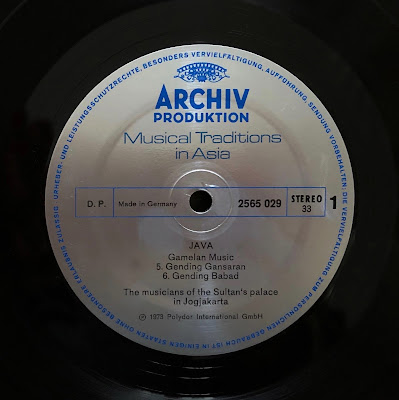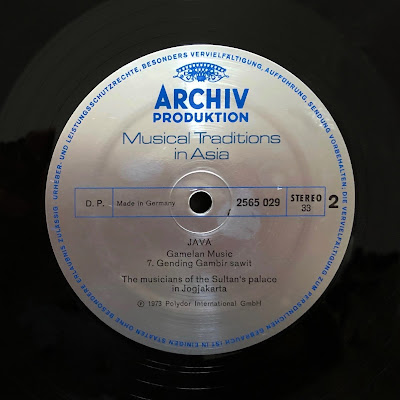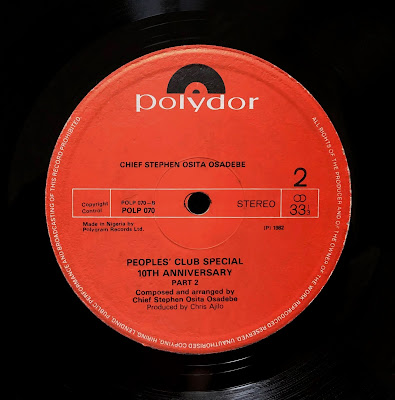Java – Gamelans from the Sultan's Palace in Jogjakarta – Archiv Produktion 2723 017, recorded by Jacques Brunet in 1972 (2 LP)
This excellent historic double LP released on the prestigious German classical music label Archiv Produktion was recorded at the Kraton (palace of the Sultan) of Jogjakarta built in 1755. Musicologist Jacques Brunet emphasizes that several Sultans of the dynasty were creative artists, some commissioned new gamelan, choreographed dances and composed gendings. His Royal Highness Hamengku Buwana IX (1912-1988), who reigned at the time of these recordings, maintained some 50 musicians and singers, as well as a large troupe of dancers in residence. Visiting musicians also came to the Palace – a major traditional cultural center – for important ceremonies.
This album showcases seven tracks performed by the court musicians and singers on seven different sets of gamelans, out of the Palace’s collection of 17 gamelans, some of which were recorded here for the first time.
Cet excellent double album historique publié sur le prestigieux label allemand de musique classique Archiv Produktion a été enregistré au Kraton (palais du sultan) de Jogjakarta construit en 1755. Selon Jacques Brunet, “ plusieurs sultans de la lignée furent des artistes créateurs. Certains firent marteller de nouveaux gamelan, créèrent des danses et composèrent des ganding ”. Son Altesse Royale Hamengku Buwana IX (1912-1988), qui régnait au moment de ces enregistrements, maintenait en résidence une cinquantaine de musiciens et chanteurs, ainsi qu’une importante troupe de danseurs. De nombreux musiciens de l’extérieur se rendaient également au palais – un centre majeur pour la culture traditionnelle – lors de grandes cérémonies.
Cet album présente sept morceaux joués sur sept gamelans différents – sur les 17 gamelans conservés au palais – dont certains ont été enregistrés ici pour la première fois.
A1 – Gamelan Sekati Kangdjeng Kyahi Naga Wilaga – Gending Andong-andong (The Venerable Fighting Serpent)
A2 – Gamelan Kodok Ngorek Kangdjeng Kyahi Keboganggang – Gending Kodok Ngorek (The Venerable Fighting Buffalo)
B1 – Gamelan Kyahi Surak – Gending Ulul-uluk
B2 – Gamelan Kyahi Hardja Mulya – Gending Laras Ati
C1 – Gamelan Kyahi Guntur Sari – Gending Gangsaran with Gending Roningatawan and Gending Bima Kurda (The Venerable Thunder of Flowers)
C2 – Gamelan Kyahi Madu Kentir – Gending Babad
D – Gamelan Kyahi Kuntul Wiranten with chorus, rebab bowed lute, and suling flute conducted by Mujiono – Gending Gambir Sawit (The Venerable Bird of Paradise)
Please help me purchase important traditional records to pursue my global
curation project and share the best finds with you on this blog:




